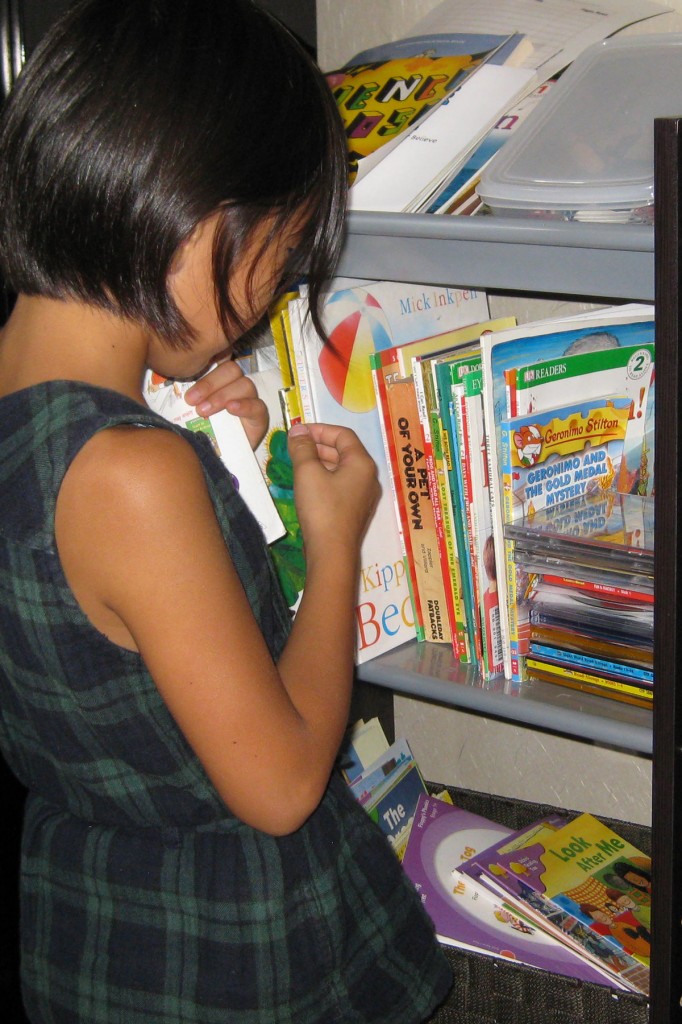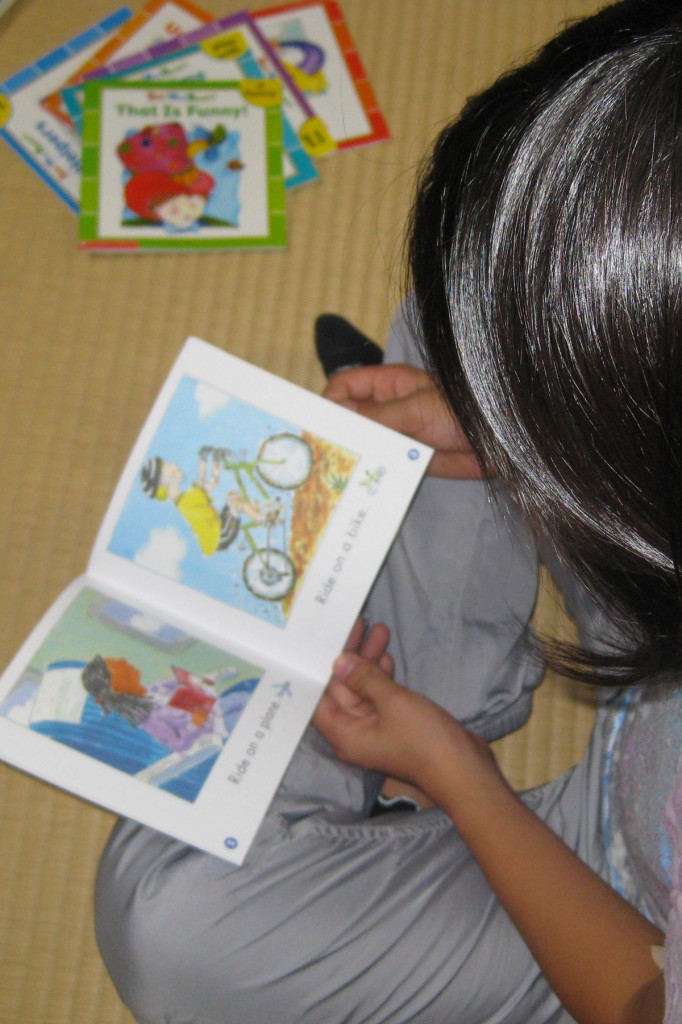Judging a book by its cover – Barbara Hoskins Sakamoto

EFT Program Director
I’m a bookworm. One of the greatest challenges for me when I first moved overseas (in the pre-Amazon era) was to keep my home stocked with fresh reading material. On rare visits home, I raided used bookstores and shipped my loot back to Japan by sea mail. The Kindle I bought before my most recent move was one of the best gifts I’ve ever given myself. It feeds my need to read, and removes the anxiety of being caught without a book at hand.
Electronic books and the devices we read them on are great for many reasons — they save trees, they save space, and digital books never go out of print. In short, they represent a great development for voracious readers. However, research suggests that they may not be so great for children who are still learning to read.
Research into what happens when children read and interact with books on a computer screen or on a tablet is still in its infancy, but preliminary findings indicates that e-books, particularly enhanced e-books (where children touch items on the screen to make things happen), may actually interfere with a child’s literacy development. The goodies that attract children to interact with the screen also distract them from interacting with the text. There’s a risk that children could end up feeling engaged with books without actually developing the skills to read them.
Becoming a strong, fluent reader requires skills that aren’t easily developed with digital books:
Predicting. We want students to be able to identify genre, or predict what a story will be about by looking at the cover art, “walking” quickly through the pages, or reading the blurb on the back of the book. This is much easier to do with a book that has a cover rather than an icon.
Discovering preferences. We want students to browse bookshelves in order to discover their emerging tastes in literature. Searching an electronic catalog makes us more familiar with the contents of a category, but reduces the chance of a serendipitous discovery on the new arrival shelf at the library.
Skimming and scanning. Students can certainly go to different sections of an e-book or search for keywords, but that’s a different skill. There’s value in quickly flipping through pages to find information or to summarize.
Adjusting reading speed and approach based on the type of text and purpose. E-books are wonderful when our interaction with the content is essentially linear, as in following a story as it unfolds. They’re less than ideal when we need to jump around looking for specific information to answer a homework question or when we’re searching for a citation we vaguely recall seeing in a reference book. For text that explains concepts or provides information, a linear approach to reading is limiting. This may be why college students still prefer ridiculously expensive textbooks rather than the less expensive digital versions.
Aside from skills development, it’s still easier, and more cost-effective to purchase traditional books for a class library. If I purchase from a used bookstore like Better World Books, I’m also saving trees and contributing to literacy charities around the world.
Digital books are engaging; so let them be a reward for children working hard at becoming literate, or a motivator for the reluctant reader. However, let’s make sure our students learn all of the skills they’ll need to enjoy stories as well as story apps, and let’s celebrate their pride in being able to browse the library shelf for a book that looks interesting and say, “I can read it myself!”




Thanks. All very valid points, Barb. I’d like to add one more: The divide between the haves and have nots. At a time when we are starting to make progress in getting adequate printed books into rural schools in under-developed regions, the use of tablets creates a divide that will be much harder to cross. Covering the cost of class-sets of print books is hard enough. Class-sets of charged, serviced and content-laden tablets doesn’t bear thinking about.
I totally agree with your point, Gareth! I see the gap within classes, where some families purchase tablets and others don’t have computers (or won’t let their children use them). I see a bigger gap when I do workshops in countries where some well-financed schools might actually purchase class sets of tablets (or bundle them in with the cost of tuition) and other (usually public) schools in remote regions feel quite high tech to finally have actual books and maybe a CD player.
Dear Barb,
You’ve raised interesting issues here. I understand the advantages of using e-books, especially the question of protecting trees, but I guess nothing compares to holding a paper book in your hands. I agree both reading modes can co-exist.
It’s an interesting activity we do with my nieces (5 and 11 years old) when we go to a bookshop, they choose the books they’d like to read and sit down at a table for a snack while reading the books they have chosen.
Hugs,
Marisa
Your nieces are lucky, Marisa! I remember the thrill of trips to the library each week to pick out books that I wanted to borrow, and the pride of becoming old enough for my very own library card. I love that you and your family make reading a special experience. I can guarantee that your nieces will have good memories associated with reading because of this!
Thanks for your kind reply, Barb! Books are precious stones for me and I share my love for them with my family and students.
Kisses,
Marisa
What a great image, Marisa . Thanks!
I couldn’t agree more with you, Barbara! Let us all teach our students the reading skills necessary on print books and allow them to practise with digital books later on. What a great message to start my working day with!
Thank you once again for the valuable insight,
Christina 🙂